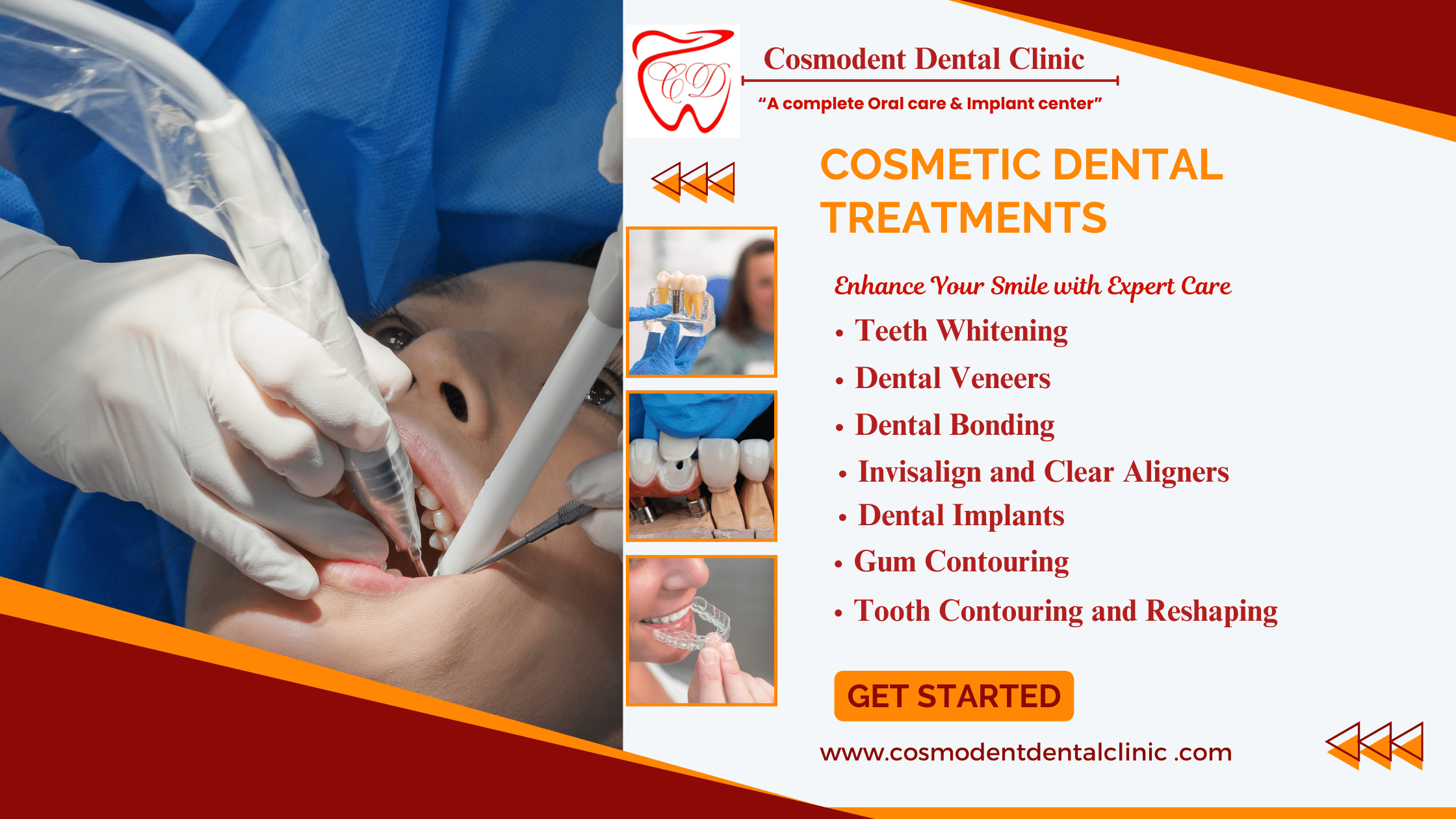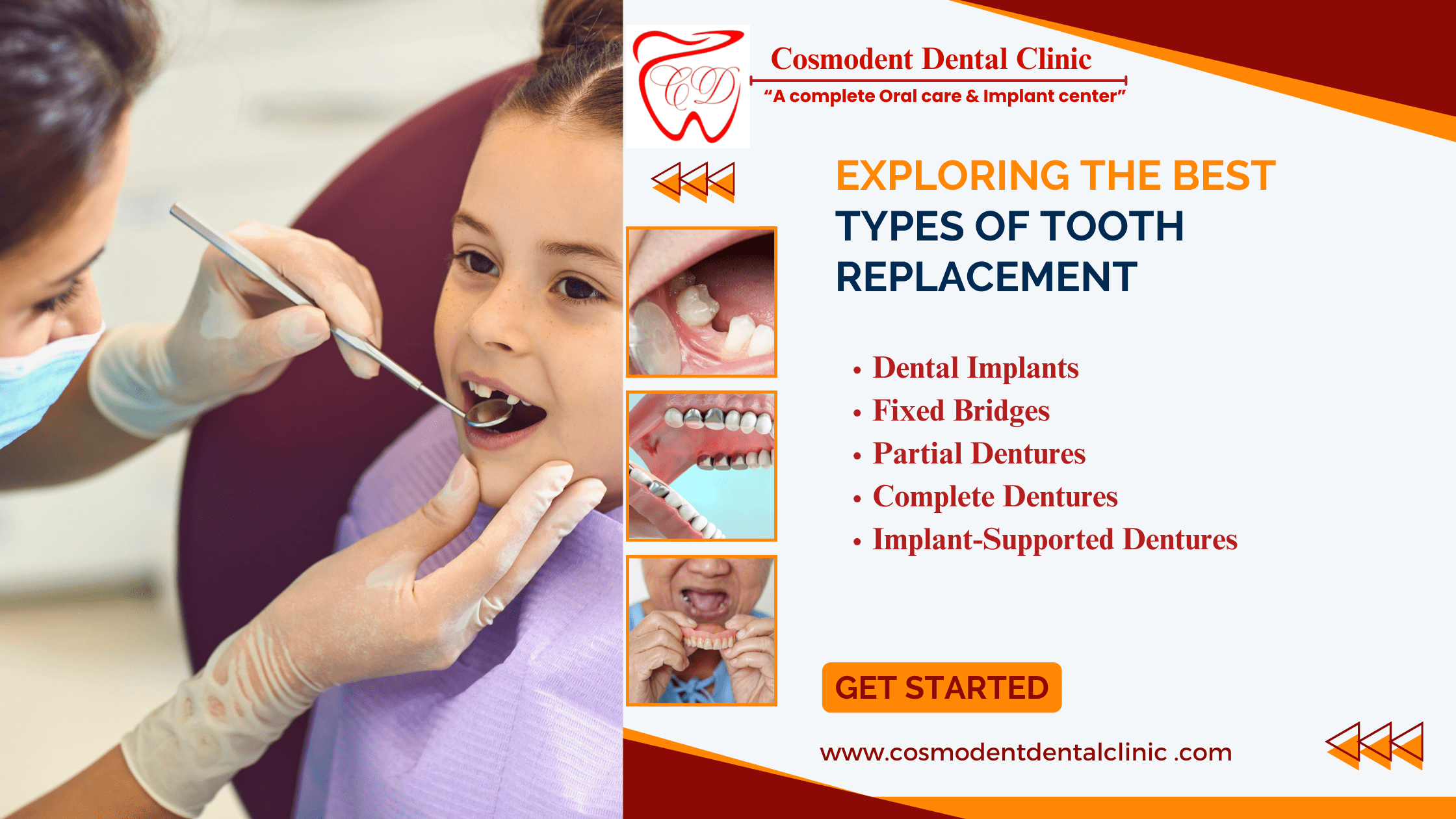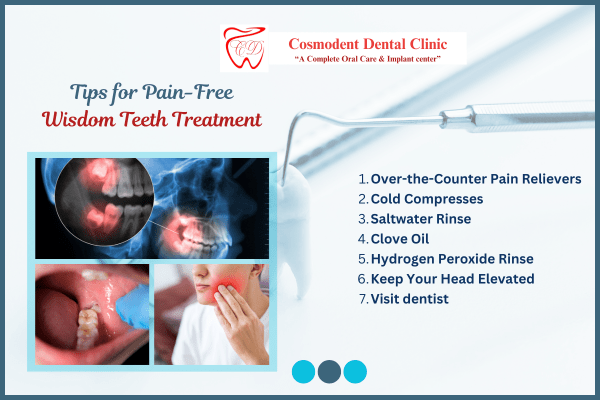Orthodontics is a specialised branch of dentistry that focuses on teeth and jaw anomalies. It involves the use of various dental devices, such as braces and aligners, to gradually move the teeth into the desired position. This type of treatment not only improves your smile but also plays an important role in maintaining good oral health.
So why is dental care important? The main goal of this treatment is to improve the function and appearance of your smile by correcting any dental problems you may have. Poor or crowded gums can make it difficult to brush your teeth properly, leading to tooth decay and other oral health problems.
In addition, crooked teeth can also cause misalignment and put unnecessary stress on a tooth, leading to headaches and gum pain. By straightening your teeth with orthodontic treatment, you are creating a healthier environment for your mouth. Properly aligned teeth are easier to clean, reducing the risk of cavities and gum disease.
There are many different types of braces available today, depending on individual needs and preferences; some of them are traditional metal braces and more common
choices, but more recently, clever options such as ceramic braces or clear aligners have gained popularity for their aesthetic appeal.
Benefits of Orthodontic Treatment:Orthodontic braces, additionally known as braces, were around for decades and are a commonplace answer for mismatched enamel. In this phase, we can discover the advantages of dental implants in more detail.
1. Improved oral health:
One of the most terrific blessings of orthodontic treatment is improved oral health. Bad teeth can create cracks and hard places wherein meal particles can get trapped, increasing plaque and increasing your threat of tooth decay and gum disease. Straightening your enamel gets rid of those cussed areas, making it less difficult to clean your mouth.
2. Good chew alignment:
Bad breath or irrelevant bites can cause nausea while eating or speaking, jaw pain, or even headaches. Orthodontic treatment corrects the alignment of your enamel by putting it in the appropriate position for higher chewing and decreasing stress in your jaw muscular tissues.
3. Enhanced Appearance:
Let’s face it: a lovely smile can be a huge self-belief booster. Tooth replacement not only improves the functionality of your teeth but also improves their look by giving you a straighter smile. As a result, many people undergoing orthodontic treatment report feeling extra confident in social situations.
4. Prevent destiny dental issues:
Crooked or crowded tooth due to excess strain in positive areas during chewing or chewing can result in uneven wear over the years and this will ultimately cause issues which includes enamel decay or, if left untreated, broken seeds. Through dental implants, you could nicely restore your enamel before something is going incorrect, stopping destiny dental issues.
5.Overall health is:
The blessings of orthodontic treatment pass beyond just oral health – it also extends your general nicely-being. Poor dental health is linked to various systemic illnesses, consisting of coronary heart sickness and diabetes. By improving your oral health through dental remedy, you can also reduce your danger of developing these conditions.
Orthodontic treatment has many advantages that move beyond just straightening your teeth. It improves oral fitness, improves look, prevents destiny dental issues, and contributes to universal wellbeing. So, if you’re considering arranging dental treatment for yourself or a loved one, realize that it’s not just about having a beautiful smile – it’s also key to unlocking a wholesome and glad existence.
Types of Orthodontic Treatment:Each treatment has its own unique benefits and may be recommended based on the individual’s specific needs and goals.
1. Traditional metal braces:
Metal braces are the most common form of orthodontic treatment and have been used for many years to correct crooked or crowded teeth. These braces have a metal bracket attached to each tooth and are linked by a wire that applies gentle pressure to gradually shift the teeth into their desired position.
2. Ceramic Braces:
Like metallic braces, ceramic braces use caps and wires to set teeth. However, those brackets are made of clear or tooth-coloured substances, making them less noticeable as compared to metal bracelets.
3. Lingual Braces:
Lingual braces work similarly to metal braces but with one key difference: instead of the teeth being placed forward, they are attached to the back (next to the tongue) This makes it almost impossible to tell when smiling or talking, making it an excellent choice for individuals who want discreet orthodontic treatment
4. Using Invisalign:
Invisalign is an increasingly popular alternative to traditional metal braces as it offers clear plastic removable for chewing and dental implants that are patient-tailored, each as desired, using advanced 3D technology and gradually adjusting teeth to align over time.
5. Retainers:
Retainers are often used after the main orthodontic treatment is completed to maintain the new position of the teeth. They can be adjusted or removed and tailored to each person’s unique bite. Wearing braces as prescribed by your dentist is important to prevent your teeth from returning to their original position.
The Process of Orthodontic Treatment1. Consultation and Examination:
During this initial appointment, the dentist will examine your teeth and gums, take X-rays and photographs, and discuss your concerns and treatment goals. This will result in an individualised treatment plan that addresses your specific needs.
2. Choosing the Right Treatment:
There are various types of orthodontic treatment available today, such as traditional metal braces, ceramic braces, lingual braces, Invisalign and other clear braces, or even oral surgery in extreme cases Your dentist will recommend the best option for you based on factors such as the severity of your case, budget considerations, and lifestyle preferences.
3. Get started:
Once you and your dentist have settled on a treatment plan, it’s time to get started! If you choose to use traditional braces, they will be attached to each tooth with small braces. These brackets are then attached to wires that apply gentle pressure to the tooth to slowly move it into the desired position.
4. Retention:
Once the active phase of your orthodontic treatment is complete, you will be given a retainer to wear. This helps maintain the new position of your teeth and prevents them from shifting back to their original positions.
Conclusion: Orthodontic treatment is a multi-step process that requires patience, commitment, and cooperation between you and your dentist. With proper technique and care, it can give you a healthy, happy smile that you can display proudly for years to come. So don’t hesitate—schedule a consultation with us today and take the first steps to unlocking the smile of your dreams!







